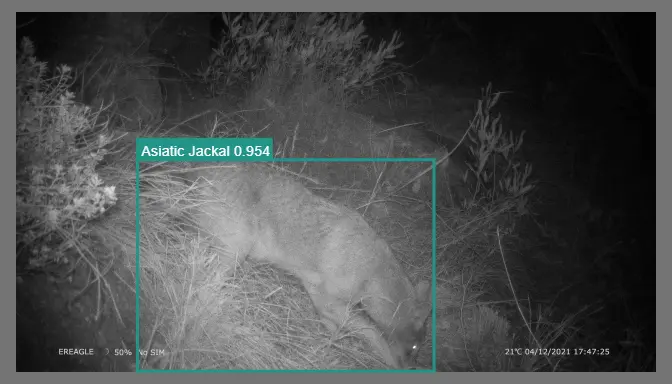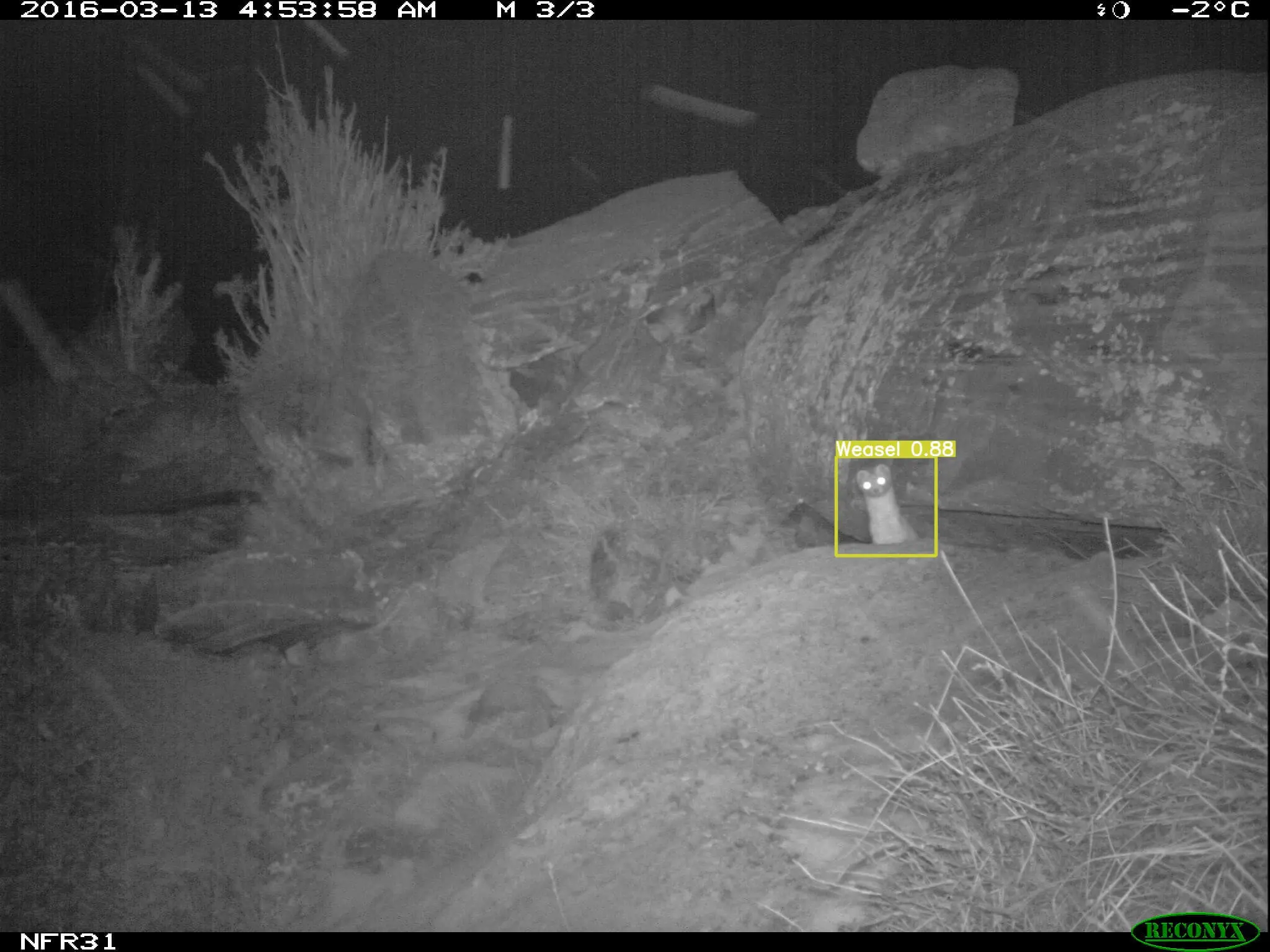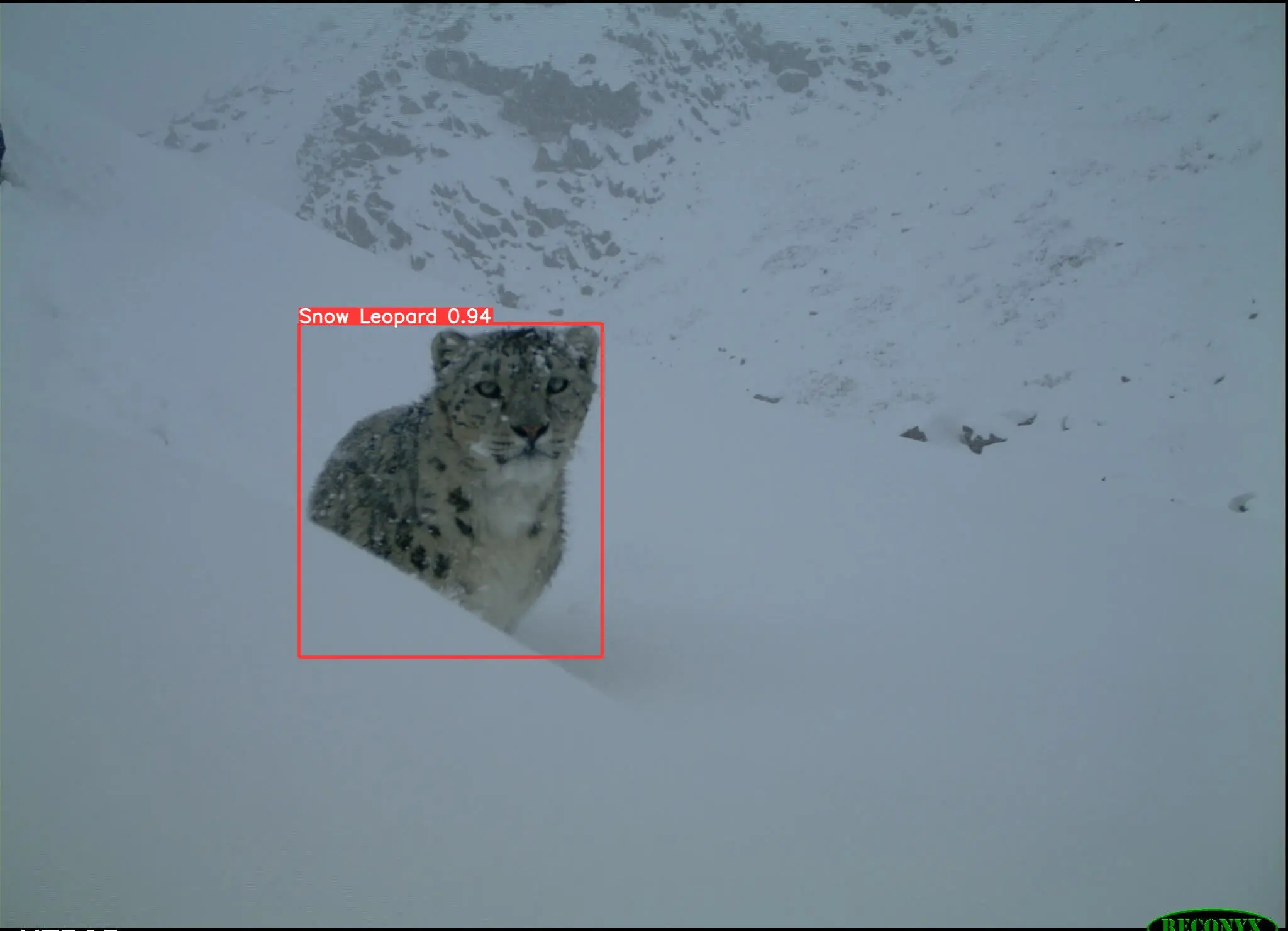Protecting Biodiversity: The Kashmir World Foundation’s Success Story With Ultralytics YOLOv5 and YOLOv8
Explore the Kashmir World Foundation's use of AI and YOLOv5 for wildlife conservation and combating poaching.
.avif)
Explore the Kashmir World Foundation's use of AI and YOLOv5 for wildlife conservation and combating poaching.
.avif)
The Kashmir World Foundation (KWF) was founded in Great Falls, Virginia in 2008 with the mission of implementing the latest technology in the fight to conserve and protect wildlife on a global scale. The KWF builds and operates autonomous, unmanned systems that support its conservation and counter-poaching efforts. In 2013, KWF began to adopt artificial intelligence in its operations.
According to the WWF, habitat loss poses the greatest existential danger to 85% of all species on the “Red List,” which classifies species as endangered or threatened. At the same time, demand for poached wild animals for use in traditional medicines, delicacies, or exotic pets looms and has reportedly increased. Together, habitat loss and poaching threaten global biodiversity and have disastrous impacts on local communities and environments.
Citing strong internal collaboration, Founder and Executive Director, Aliyah Pandolfi explains that “students, academics, engineers, and scientists from all over the world are willing to volunteer their time and expertise.” The KWF is 100% run by volunteers from all over the world. Through their work, the KWF has made great strides in protecting threatened and numerous endangered species such as Sand Cats in Qatar, Sea Turtles in Costa Rica, and Snow Leopards in the Himalayas.
"We all do this because we love the animals, but more importantly we want to use our skills to do good in the world and make a positive change for these species that might not otherwise survive.”
Aliyah Pandolfi
Founder and Executive Director, Kashmir World Foundation
In many cases, it is extremely difficult for conservationists to access the locations where poaching occurs. The KWF must confront four key roadblocks in their conservation efforts in remote corners of the world:
In the past, conservationists have placed video recording devices in the field meant to have the footage watched back later. With hundreds upon thousands of hours of footage, this process relies on the viewer to meticulously detect and identify both animal species and poachers. Due to time constraints and human error, this approach proved to place conservationists at a disadvantage. The volunteers at the KWF knew they needed to be better equipped to take a stand against poachers and illegal hunting.

Technology’s inevitable progression acts as a double-edged sword. As it continues to become higher quality and more accessible, both conservationists and bad actors can get their hands on the latest technology. To remain competitive, conservationists must be prepared to harness the power of the newest technology to use to their advantage.
Pandolfi needed an aggressive solution in the field that provided the KWF with real-time information. Needing a solution that eliminated human error and confronted the four key roadblocks, she knew that even a matter of seconds can make a difference in a counter-poaching mission, meaning that real-time insights can play a direct role in preventing an animal from being killed.
With creativity on her side, Pandolfi considered the technology and resources necessary for the project. While much of the technology she needs is available present day, Pandolfi is anticipating the release of hardware and software that should become available in the near future. Leading her team at the KWF to develop approaches utilizing drones, AI, and GPS capabilities.

“At the beginning of this project, there were many doubts from the community. I’ve been told that it’s crazy, it’s impossible, you can’t do it, and the technology doesn’t exist, but I was thinking in the long term, the computer science and drone capabilities needed to evolve and fuse together for this project.”
By placing a variety of cameras and sensors in at-risk locations, the KWF receives data from locations around the world, providing them with actionable insights to make split-second decisions.
“Imagine that there are poachers at a particular location,” says Pandolfi, “we want to be able to follow them and alert rangers to their position so that they can intercept the poachers and stop them before they kill any animals.”
Requiring real-time object detection, the KWF needed their model’s outputs to be highly accurate and reliable. In weighing her options, Pandolfi's KWF A.I. Team Lead, Daan Eeltink, a student in The Netherlands, compared the performances of YOLOv4 and YOLOv5. With YOLOv5, several points of differentiation led the team at the KWF to choose it for their projects:
The KWF relies on a team of volunteers, engineers, and interns from all over the world to build the technology necessary for their conservation efforts. Many of the interns are high school students, some of them having minimal or no experience with YOLOv5. Pandolfi saw that even those with the least prior experience were able to have YOLOv5 up and running in less than three weeks.
Additionally, an integration with an experiment tracking platform made fine-tuning the models and datasets straightforward, allowing the KWF to maximize the performance of their YOLOv5 models in the field.
“YOLOv5 was accurate and helped us save the animals before being killed, which was our ultimate goal.”
Without YOLOv5, Pandolfi says her team at the KWF would be frustrated. Before implementing object detection, the conservation projects lacked an optimal amount of data.
In early 2023, the KWF will be transferring their work to Ultralytics YOLOv8, the latest release in the YOLO family of vision AI architectures.
At the moment, the KWF deploys YOLOv5 for object detection on sensors in the field. These devices send data to biologists who are then able to analyze the information and create actionable insights. In the coming year, the KWF aims to train YOLOv5 on datasets containing drone imagery, to then deploy these drones in the field.
There are seven different species of sea turtles in the world and each one is considered endangered. When laying eggs, female sea turtles come onto beaches and dig nests in the sand where they then lay their eggs. This process can take several hours, but once it is done, the female sea turtles return to the water, leaving their eggs to incubate in the sand for 55-65 days. As the mothers leave for good, the eggs are left with few defenses from poachers, predators, and the natural elements.
_(1).webp)
In the past, conservationists’ approach to tracking sea turtles has been to mark all locations on a beach where there are nests. If threats in these areas are high, the conservationists will relocate the nests to a safer location in the meantime, and release the turtles into the ocean once they hatch.
This process can involve manually walking beaches that are 30 miles or longer and marking nests. Providing an adequate amount of manpower to carry out this process each day has proven to be difficult, especially during the COVID-19 lockdowns.
Additionally, marking the sea turtle nests sometimes proved to be counteractive. Not only could poachers seek out the nests that were marked, but pigs were also able to learn that markers meant there were sea turtle nests nearby which led them to eat the eggs.
The KWF saw an opportunity for improvement within this process by cutting down on the manpower factor and replacing the easily-identifiable markers. By setting up autonomous aerial systems using YOLOv5 to detect, locate, and characterize sea turtle nests, biologists could receive real-time information about sea turtle nests, including their tracks and geographic location, thus replacing the need for biologists to manually walk the beaches and mark the nests.
Snow leopards’ thick white fur with dark spotted rosettes allows them to perfectly camouflage in the Himalayan landscape. In the wild, they are apex predators with no natural predators. However, due to the extremely high demand for their fur and other body parts in fashion and traditional medicine coupled with habitat loss and fragmentation, it is estimated that there are only between 4,000 and 6,500 snow leopards left in the wild.
Conservation efforts for snow leopards have proven to be extremely difficult as a result of the factors that contribute to the harsh environment where they are found:
Additionally, it is extremely rare to spot snow leopards in the wild. As a result, the KWF is developing an automated approach to protecting these big cats, utilizing drone technology to track and protect them. At this time, drone technology is still under development so that it can get to the point where the machines can operate in the conditions necessary to track the snow leopards, which is around 20,000 to 22,000 feet.

Once the technology is available, the KWF intends to use YOLOv5 in the sensors and on drones, which will then be deployed to the Himalayas. For tracking purposes, these sensors and drones will be able to detect pawprints in the snow, which usually blow away quickly with the wind. This real-time information will then be relayed to biologists and conservationists.
Visit the Kashmir World Foundation website and check out how you can help make a difference in their conservation efforts worldwide.